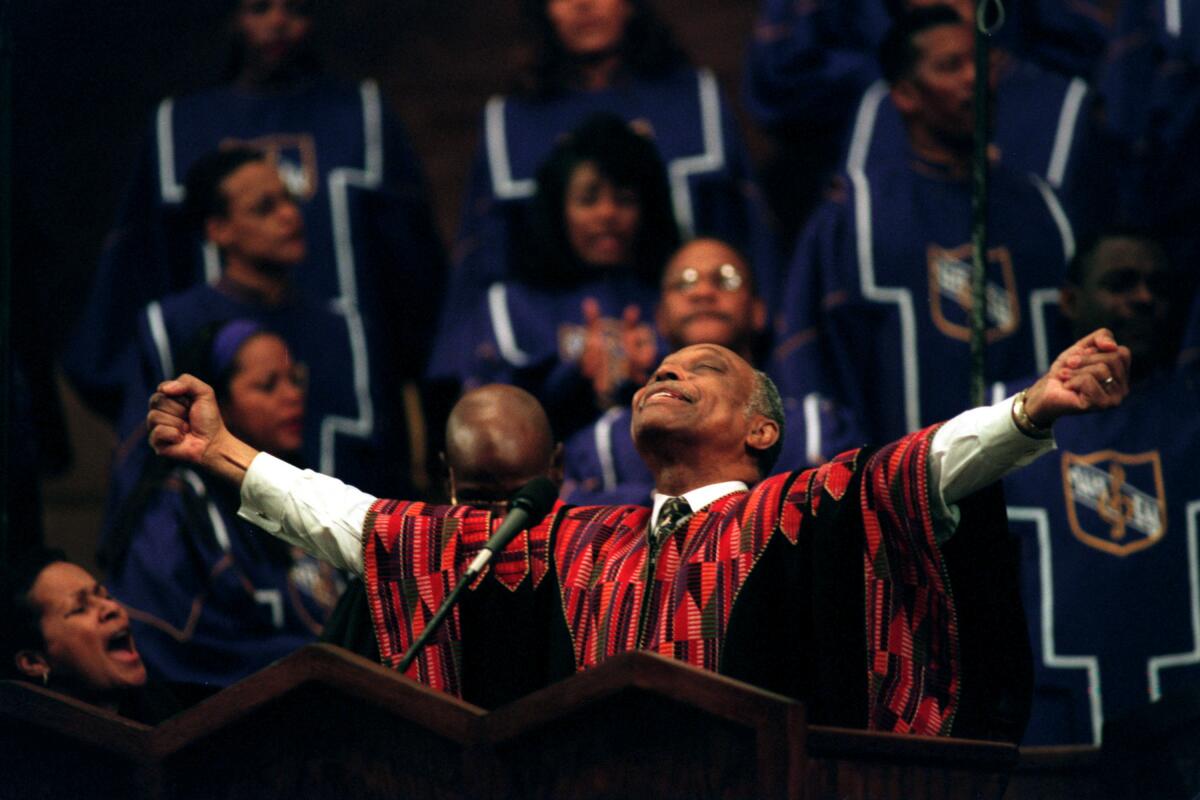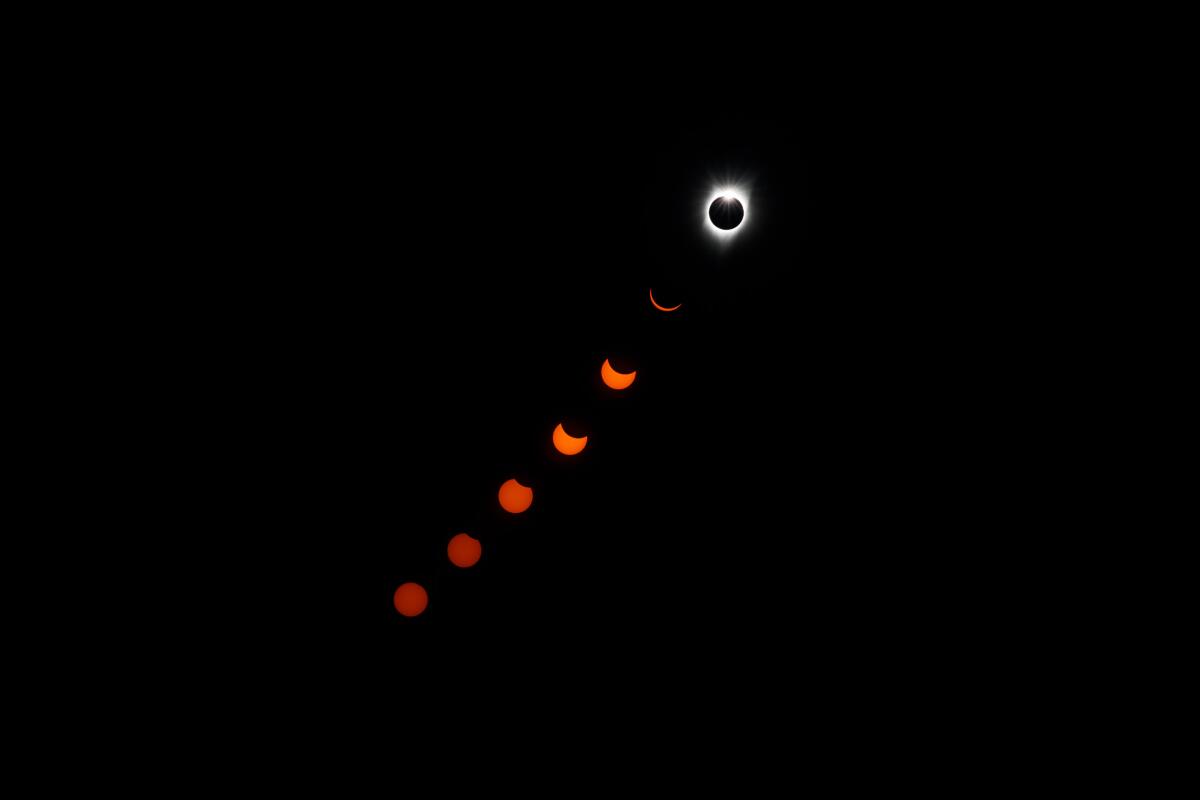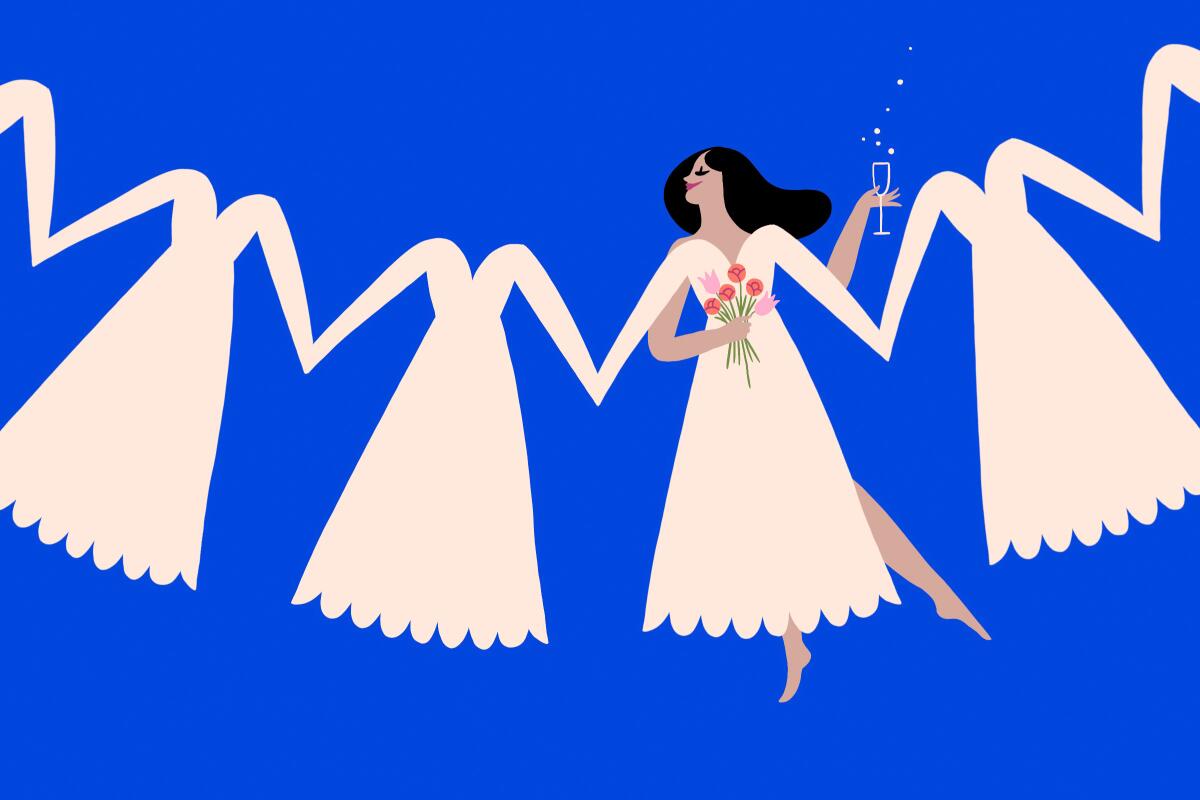Ski slopes seem to be getting more dangerous. The resorts don’t want to talk about it

- Share via
Good morning, and welcome to the Essential California newsletter. It’s Sunday, April 7. I’m investigative reporter Jack Dolan. Here’s what you need to know to start your weekend:
- Ski slopes are getting more dangerous. Blame GoPros, gummies and reckless abandon.
- Cecil ‘Chip’ Murray, an L.A civil rights icon and spiritual leader, died at 94.
- The best SoCal culture for your calendar this week.
- And here’s today’s e-newspaper
You're reading the Essential California newsletter
Our reporters guide you through the most important news, features and recommendations of the day.
You may occasionally receive promotional content from the Los Angeles Times.
Accidents are surging on the slopes
If you’re a skier in California, chances are you’ve noticed the slopes at major resorts seem a bit more crowded than they used to be. You might even know someone who has been injured in a collision with another skier or snowboarder.
To find out what’s going on, we asked some of the biggest and best-known ski areas in California for data on the number of skiers who have visited their resorts and the number of injuries they’ve sustained in recent years.
What did they tell us? Absolutely nothing. Most didn’t even respond to the request.
So we turned to the state health department, which, it turns out, keeps a vast database of visits to emergency rooms. They keep track of the reasons, too. The list includes car crashes, dog bites, falling out of bed — and extremely rare events such as hang-glider crashes and forced spacecraft landings. (Yes, “spacecraft.”)
Ski injuries increased 50% over seven years.
Buried in the millions of records on the health department’s website were more than 30,000 emergency room visits due to skiing and snowboarding injuries from 2016 through 2022. And those injuries went up at an alarming clip, a 50% increase over the seven years.
This came as no surprise to retired ski patrollers, emergency medical technicians and hospital staff in mountain town emergency rooms. They placed the blame on a number of factors:
- A growing recklessness on the slopes that seems to have emerged post-pandemic, behavior often exacerbated by people gobbling pot gummies and magic mushrooms or drinking copious amounts of alcohol before hitting the slopes.
- Another factor: Skiers are so focused on taking selfies and shooting video for their social media feeds that they seem oblivious to what’s happening around them. And they’re willing to go way beyond their limits for the perfect shot. A classic mistake is riding the gondola to the 11,053-foot summit at Mammoth to get a selfie with the iconic signpost that marks the top, only to discover there is no easy way down.
It’s not just the number of injuries that seems to be increasing, it’s also the severity.
On a busy Friday shift in early March, Dr. Kyle Howell said he saw four patients rushed from the slopes to Mammoth Hospital’s ER with punctured lungs, two with air in their chest cavities around their hearts. He spent hours “fixing the face” of a kid who had smashed into a tree.
Howell said he doesn’t normally have to juggle that many serious cases at once. But the injuries were familiar. At least two of the patients with punctured lungs had not fallen on their own. They had been hit from behind by skiers or snowboarders careening out of control. The impact had broken their ribs and burst their lungs.
“Personally, that’s my biggest fear when I’m skiing,” said Howell, who has worked at the hospital more than 20 years.
The rapid expansion of terrain parks has added to the risk.
Years ago, when kids built little ramps at the side of a ski run, ski patrollers would demolish them with shovels and threaten to confiscate their lift tickets.
These days, resorts build ramps themselves — massive ones — and giant halfpipes designed for the kind of soaring acrobatics you see in the Olympics. They’re a big draw and feature heavily in marketing materials. The hype tempts inexperienced people to go faster, bigger and higher, with predictable results.
“It’s not uncommon for me to treat several patients on a given day who have suffered what amount to 40-foot falls when they overshoot the landing on big jumps,” Howell said. “These are just massive, massive falls, and they cause the kinds of injuries we only used to see in professional athletes.”
Skiing and partying have always gone hand in hand. But in years past, it felt as though most of the debauchery was saved for apres ski.
That seems to be changing. Nurses at Mammoth Hospital have a hack to figure out if they’re about to get busy: They check the webcams on mammothmountain.com to see if the outdoor bars are filling up while the lifts are still running.
Hard partying might be fine on a fishing trip or a golf outing, said Caitlin Crunk, Mammoth Hospital’s chief nursing officer. But skiing is a sport that requires fine motor skills and reasonable inhibition. She can’t understand why anybody would want to ski while drunk.
“You’re like a 30-mile-per-hour weapon out there, bombing down the hill with, essentially, swords on your feet,” Crunk said. “That’s just a recipe for disaster.”
Read more: GoPros, gummies, reckless abandon: Why ski slopes are getting more dangerous
The week’s biggest stories

Cecil ‘Chip’ Murray, an L.A. civil rights icon and spiritual leader, died at 94
- Murray made the First African Methodist Episcopal Church the most prestigious Black pulpit in Los Angeles, attracting presidents, governors and mayors to hear his dynamic sermons.
- From the archives: Thousands Bid Farewell to First AME’s Rev. Cecil L. “Chip” Murray at his last service.
The perfect heist?
- Inside the seamless, sophisticated, stealthy L.A. theft that netted up to $30 million.
- A neighbor heard odd noises during the heist. She didn’t think much of it. Until now.
The Trump campaign
- These billionaires abandoned Trump after Jan. 6. Taxes are bringing them back in line.
- Trump appeared at a fundraiser for a creator of his “family separation” policy.
A drying out West
- This epic slice of Arizona feeds their souls but lacks a basic necessity: Water
- Why this year’s average California snowpack is no reason for celebration.
City politics
- L.A. City Council agreed to pay up to $2.2 million for an outside audit of homelessness programs. That may not be enough to satisfy the federal judge who ordered the audit.
- City Controller Kenneth Mejia is becoming increasingly outspoken about the mayor’s efforts on police spending, the city budget and homelessness.
Tomorrow’s eclipse
- These scientists think an “awe”-some eclipse could help unite Americans in troubled times.
- Going to miss it? Don’t worry, the next one is only years away.
Earthquakes!
- Taiwan’s recent earthquake sparked anxious news coverage from all over the world. Are they concerned with Taiwan’s people or its microchips?
- A rare magnitude 4.8 earthquake rattled New Jersey and New York.
- California is overdue for a major one. Sign up for our newsletter series to get earthquake ready in six weeks.
More big stories
- He fled the country and landed on the FBI’s list of most-wanted fugitives. Now Michael Pratt, the alleged mastermind behind a porn site that prosecutors say doubled as a sex trafficking ring, is back in San Diego to face federal charges.
- An old rail track in Northern California could become a 300-mile hiking trail.
- An AI app claims it can detect sexually transmitted infections. Doctors say it’s a disaster.
Get unlimited access to the Los Angeles Times. Subscribe here.
Column One
Column One is The Times’ home for narrative and longform journalism. Here’s a great piece from this week:

A total eclipse is more than a spectacle. So I’m on the road to see it — again. Why would someone journey across the country to watch a total eclipse? Because it’s more than just an astronomical rarity: It may be the best show in the universe.
More great reads
- Like Mike Trout, Angels fans understand loyalty. Don’t confuse it for blind faith.
- Netanyahu owes the U.S. better answers about Gaza, columnist LZ Granderson writes.
How can we make this newsletter more useful? Send comments to essentialcalifornia@latimes.com.
For your weekend
Going out
- 🕺‘Fat Ham,’ Coachella and Virginia Woolf as dance: The best SoCal culture for your calendar this week.
- 🌴 A new Palm Springs restaurant by two L.A. legends fits right into the community.
- 🌗 6 excellent L.A. spots to watch the awe-inspiring solar eclipse.
Staying in
- 📖 Suddenly focused on baseball gambling scandals? There’s a book for that.
- 📺 In ‘Mr. Bates vs. The Post Office,’ Toby Jones is the quiet, stubborn leader of a resistance. It comes to PBS tonight.
- 🧑🍳 Here’s a recipe for Smash Burgers.
- ✏️ Get our free daily crossword puzzle, sudoku, word search and arcade games.
L.A. Affairs
Get wrapped up in tantalizing stories about dating, relationships and marriage.
I didn’t want a typical engagement. What happened at my wedding surprised me. As I planned my wedding, I knew that I didn’t want a sweetheart neckline or a tea-length hem. I vowed to have a wedding that felt personal, modern and authentic.
Have a great weekend, from the Essential California team
Jack Dolan, investigative reporter
Karim Doumar, head of newsletters
Carlos Lozano, weekend editor
Check our top stories, topics and the latest articles on latimes.com.
Sign up for Essential California
The most important California stories and recommendations in your inbox every morning.
You may occasionally receive promotional content from the Los Angeles Times.









